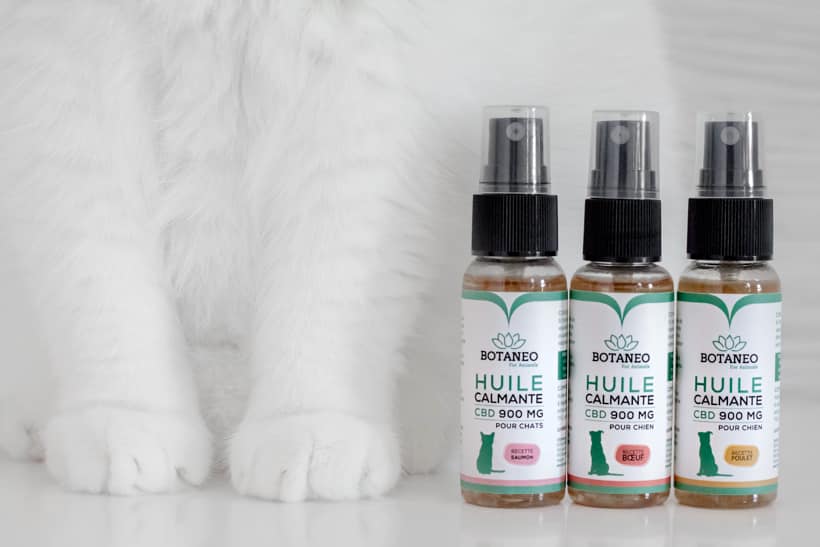Animal Health, Cat, Pain
Pain Reliever for Cats: Which One to Choose?
It is always very painful to see your cat suffering and not knowing what to do.
” Can I give my cat paracetamol? Aspirin? What is the best anti-inflammatory for my cat? How do I know if my cat is really in pain? ” These are all questions that can arise when faced with an injured, sick or suspicious-behaving cat.
Here is an article on the right things to do if your cat is in pain and, above all, what not to do.
Because even though it may be tempting to give your cat human medications, some can have dramatic or even fatal consequences for your cat.
In any case, it is always best to consult a veterinarian if you think your cat is in pain or before giving him any treatment.
SIGNS OF PAIN IN CATS
Signs of pain in cats can be very difficult to spot. Here are some clues that can alert you to a potential problem with your cat.
-
My cat bites and/or scratches:
Cats in pain are more likely to bite and scratch. This is especially true if you touch the painful area, or if the cat thinks you are going to touch the area where it is in pain.
-
My cat no longer breathes in the same way:
If your cat is in pain, your cat may have faster and more irregular breathing than normal. They may also pant. You may even notice a change in the movement of the chest muscles, since they are involved in breathing.
-
My cat’s heart rate and pulse are different:
Cats in pain will often have an increased heart rate. It will also noticeably speed up when the painful area is touched or moved. To avoid missing this sign, it is advisable to take a pet first aid course or ask your veterinarian to show you how to check and measure your cat’s heart rate.
-
My cat purrs:
Just because your cat is purring doesn’t mean he’s not in pain. If your cat is purring while exhibiting any of the other signs listed here, the purring may be related to pain. In fact, purring may increase in a cat who is in pain.
-
My cat’s eyes and gaze are different:
The eyes can be very telling in cats in pain. This is true both for eye pain itself but also for pain elsewhere in their body. Often, pain elsewhere in the body will result in larger (dilated) pupils, while pain in the eye can result in larger or smaller (constricted) pupils. Squinting can indicate pain, either in the eye or elsewhere in the body. Similarly, eyes that appear “bloodshot” can indicate eye pain and infected eyes.
-
My cat eats and/or drinks differently:
If your cat is in pain somewhere, they may eat and drink less. This is especially true when the pain is dental or comes from the mouth. In this case, they may avoid food and/or water for fear of being in pain.
-
My cat grooms less or more in a certain place:
You may notice an overall decrease in self-grooming in a cat suffering from an illness. However, a cat with an injury may groom the area where it is in pain more.
-
My cat is less active than usual:
Most cats who are in pain are generally less active. This often translates into a cat sleeping more, but can also translate into a cat running or jumping less. Many cats hide when they are in pain – choosing to spend time under beds, on couches, or in closets. Be sure to keep an eye on your cat if they are hiding, as this is often a very telltale sign of pain.
WHAT SHOULD I DO IF MY CAT SHOWS SIGNS OF PAIN?
Your cat is more than a pet, he is a member of your family. And it is normal that you want to help him if he is suffering.
But no matter how much you love him, don’t open your medicine cabinet to help him. You might do him more harm than good.
Talk to your veterinarian before you do anything. They will try to find out what is causing your pet’s pain.
Your cat may indeed have a problem that requires treatment beyond pain relief.
Many medications that humans use can make animals very sick.
Medications that should absolutely not be given to your cat include common non-steroidal anti-inflammatory drugs (NSAIDs), such as ibuprofen or paracetamol (also called acetaminophen) – present in products such as Doliprane, Dafalgan or Efferalgan – which can be fatal for felines.
NON-STEROIDAL ANTI-INFLAMMATORY DRUGS FOR CATS
The European Medicines Agency (EMA) has not approved any NSAIDs for long-term pain management, but some are recommended for short-term use in cats.
Your veterinarian may prescribe robenacoxib , which is also available as an injection. Meloxicam is another NSAID, usually prescribed after surgery. It can also be given orally as a liquid.
Your vet may also suggest Aspirin , but in small doses and not long term. Sometimes it is given in liquid form.
Make sure you give the exact recommended dose. Cats only need small doses and too much can harm them.
Don’t assume you know the exact dosage. And don’t overuse medications. NSAIDs for cats are approved for up to 3 days of use.
OTHER SOLUTIONS TO RELIEVE YOUR CAT
Opiates: These include codeine, fentanyl, hydromorphone, morphine and tramadol and are used for serious problems. They are often given after surgery or for chronic conditions such as arthritis or advanced stages of cancer. Be sure not to give your pet codeine in combination with paracetamol (acetaminophen).
Corticosteroids: These medications relieve pain due to allergies or arthritis mainly by reducing inflammation. They include dexamethasone and prednisolone.
Gabapentin: This seizure medication helps treat pain in the nerves, muscles, and bones.
Amitriptyline: An antidepressant in humans, it can relieve nerve pain in cats.
THE CASE OF PARACETAMOL (DAFALGAN, DOLIPRANE, EFFERALGAN…)
Paracetamol is extremely dangerous for cats and should never be used to treat pain in cats.
We have all thought to ourselves, “Ouch, where are the painkillers?” after our cat has been injured. However, never give your cat paracetamol as it will do far more harm than good.
Unlike humans, cats are not able to safely assimilate paracetamol.
The toxic compounds in paracetamol quickly cause irreversible damage to the blood of cats and a syndrome called “methemoglobinemia” where the tongue and gums turn chocolate brown. Liver damage is often fatal.
If paracetamol is ingested, call your veterinarian immediately.
In particular, he will be able to give you instructions on how to make your cat vomit (effective up to one hour after ingestion).
There is also an antidote called N-Acetyl-Cysteine, which can save your cat’s life if given early enough.
Taking quick action here is essential for your cat’s health.


